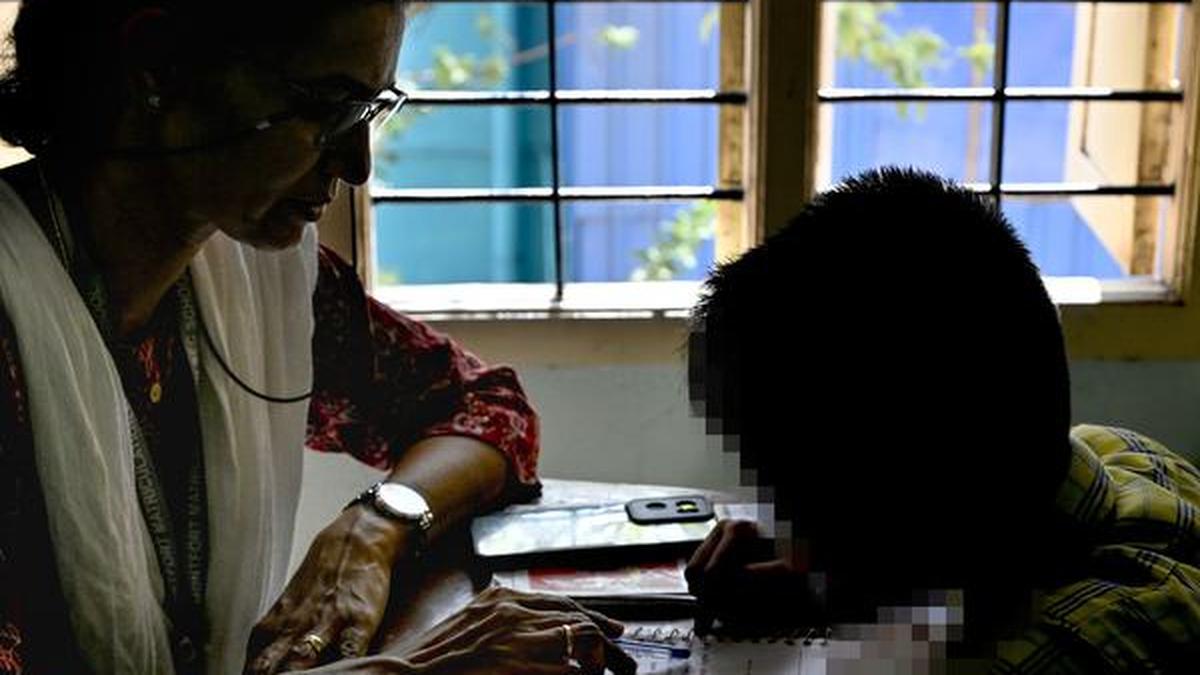
How special is education anyway? Premium
The Hindu
A day in the life of special educators under the SSA, facing challenges due to lack of resources and support.
The day begins at 10 a.m. for special educator T. Radha (name changed). Her first stop is a Corporation school in Chennai where she gives training and teaches a modified syllabus to a disabled child. After recording the child’s progress and speaking to the class teacher about it, she moves on to the next child. By the time the school closes at 4.30 p.m., she has attended to 10 children with disabilities, but 20 more are waiting. “If I am to take three days to see the kids in one school, how will I be able to visit the 15 other schools I have to cover in a month, and that too twice, as mandated by the Samagra Shiksha Abhiyan (SSA),” she asks.
This is a typical day for special educators under the Inclusive Education Programme of the SSA run by the Union government. Tamil Nadu’s School Education Department defines intellectual disability as a condition in which a child has a low IQ (below 70) and struggles with everyday skills. The department also follows the guidelines laid down by the Rights of Persons with Disabilities Act, 2016, to define intellectual disability. Criticism has been rising about the dearth of qualified special educators, the execution of programmes such as SSA, and the support extended to government-recognised private schools. There have been calls to change the approach of “inclusive education” to “individualised education”.
According to the reply to a question under the Right to Information Act, in Tamil Nadu as many as 64,377 children with special needs are studying in schools under the SSA; 49,286 of them have intellectual disability, and 10,265 have multiple disabilities. However, only 1,649 special educators have been employed. This highlights a major flaw in the SSA’s inclusive education: the number of disabled students is disproportionate to the number of special educators.
M. Ravichandran, State general secretary of the Confederation of Associations for Persons with Mental Disabilities, highlights the severe shortage of special educators. “The distribution of the special educators does not ensure the individual attention each child deserves. Further, the State’s concept of ‘inclusive education’ is flawed, as students with varying degrees of intellectual disability may struggle in mainstream schools where their needs are not consistently met,” he explains.
Introduced in 2001 under the Sarva Shiksha Abhiyan, the SSA is meant to ensure that all children with disabilities have access to schooling. Under it, every block is supposed to have 5-10 special teachers who would visit the schools once a week. Most blocks should have at least five special educators who cover 6-10 schools. A special educator identifies the child, formulates individualised education plans, assists mainstream teachers in the teaching plan, gets Unique Disability Identity and assistive devices, trains parents, conducts home-based therapy, and also runs day-care centres that the special children visit at least once a week for therapy. The special educators must visit two schools a day.
However, in reality, many blocks fall short of achieving the target, say educators. Even in Chennai, two to three special educators handle more than 120 children in 15 schools spread across 10 zones. Besides, they are paid ₹25,000 a month as honorarium, which has not been increased in the past 16 years.
Special educator R. Latha of Coimbatore district says the overwhelming workload prevents the teachers from adequately addressing the needs of their students. “While students up to Class VIII and sometimes Class X may use scribes at examinations and progress with ease, they face significant difficulties in the higher secondary classes,” she says.













